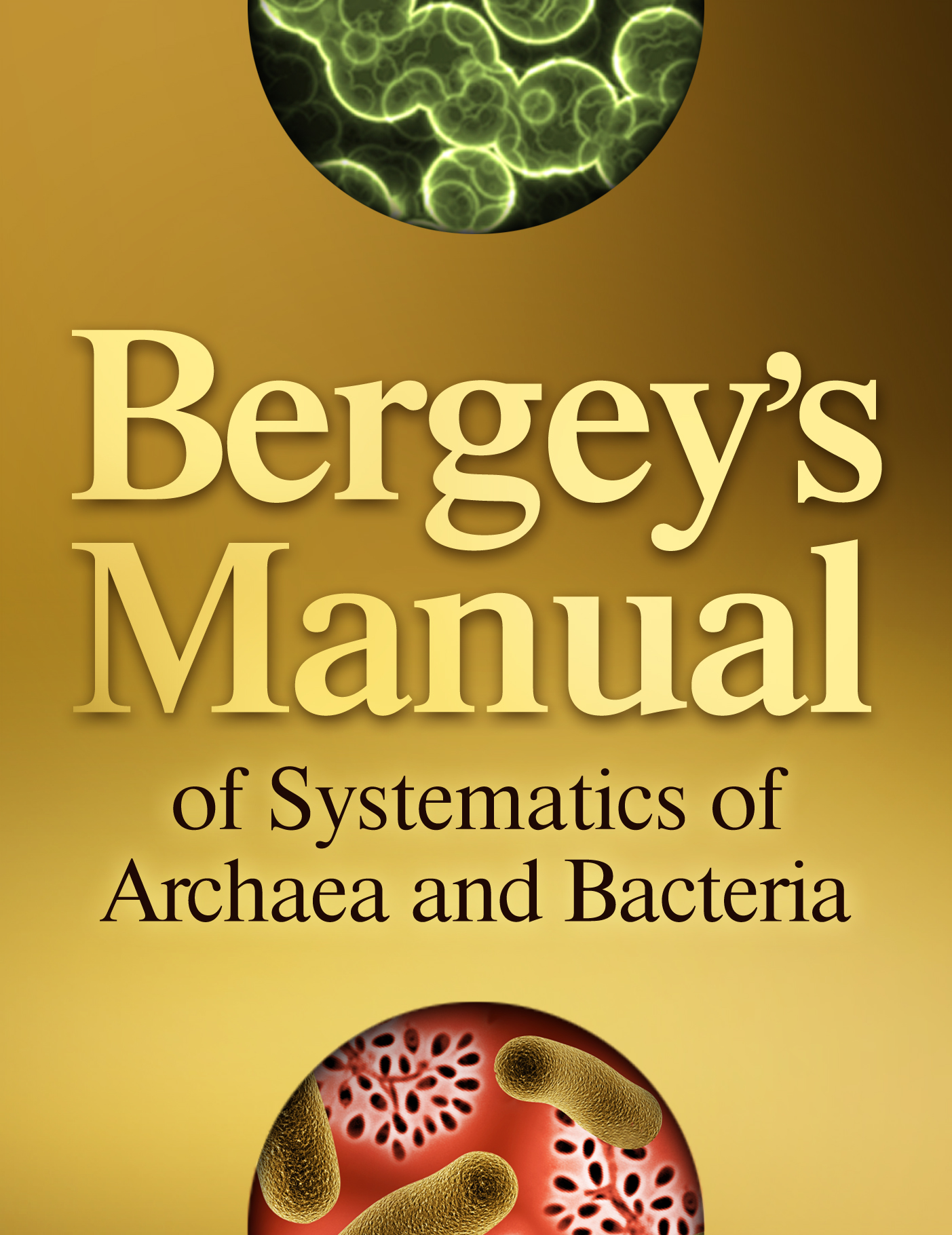Actinobacteria †,‡
Actinobacteria
Actinobacteria
Michael Goodfellow,
Michael Goodfellow
University of Newcastle, School of Biology, Ridley Building, Newcastle upon Tyne, NE1 7RU UK
Search for more papers by this authorMichael Goodfellow,
Michael Goodfellow
University of Newcastle, School of Biology, Ridley Building, Newcastle upon Tyne, NE1 7RU UK
Search for more papers by this author†
Stackebrandt, Rainey and Ward-Rainey 1997, 483
‡
Published by John Wiley & Sons, Inc., in association with Bergey's Manual Trust.
Abstract
Ac.ti.no.bac.te'ri.a. Gr. n. actis -inos a ray, beam; N.L. n. bacter a rod; suff. -ia ending denoting a class; N.L. pl. neut. n. Actinobacteria actinomycete bacteria with diverse morphologies.
Actinobacteria / Actinobacteria
References
- Bérdy, J. 2005. Bioactive microbial metabolites. J. Antibiot. (Tokyo) 58: 1–26.
- Buchanan, R.E. 1917. Studies in the nomenclature and classification of the bacteria: II. The primary subdivisions of the Schizomycetes . J. Bacteriol. 2: 155–164.
- Bull, A.T. 2010. Actinobacteria of the extremobiosphere. In Handbook of Extremophiles. Springer.
- Euzéby, J.P. and B.J. Tindall. 2001. Nomenclatural type of orders: corrections necessary according to Rules 15 and 21a of the Bacteriological Code (1990 Revision), and designation of appropriate nomenclatural types of classes and subclasses. Request for an Opinion. Int. J. Syst. Evol. Microbiol. 51: 725–727.
- Goodfellow, M. and K.E. Simpson. 1983. Ecology of streptomycetes. Front. Appl. Microbial. 2: 97–125.
- Goodfellow, M. and S.T. Williams. 1983. Ecology of actinomycetes. Annu. Rev. Microbiol. 37: 189–216.
-
Goodfellow, M.
2010. Selective isolation of Actinobacteria
. In
Manual of Industrial Microbiology and Biotechnology, 3rd edn, vol. Section 1 (edited by Bull and Davies), 1. Isolation and Screening of Secondary Metabolites and Enzymes (edited by Baltz, Davies and Demain). ASM Press, Washington, DC, pp. 13–27.
10.1128/9781555816827.ch2 Google Scholar
- Goodfellow, M. and H.P. Fiedler. 2010. A guide to successful bioprospecting: informed by actinobacterial systematics. Antonie van Leeuwenhoek 98: 119–142.
- Jensen, P.R. 2010. Linking species concepts to natural product discovery in the post-genomic era. J. Ind. Microbiol. Biotechnol. 37: 219–224.
- Lapage, S.P., P.H.A. Sneath, E.F. Lessel, V.B.D. Skerman, H.P.R. Seeliger and W.A. Clark. 1992. International Code of Nomenclature of Bacteria (1990 Revision). Bacteriological Code. Published for IUMS by the American Society for Microbiology, Washington, DC.
- Newman, D.J. and G.M. Cragg. 2007. Natural products as sources of new drugs over the last 25 years. J. Nat. Prod. 70: 461–477.
- Okoro, C.K., R. Brown, A.L. Jones, B.A. Andrews, J.A. Asenjo, M. Goodfellow and A.T. Bull. 2009. Diversity and cultivable actinomycetes in hyper-arid soils of the Atacama Desert, Chile. Antonie van Leeuwenhoek 95: 121–133.
- Olano, C., C. Mendez and J.A. Salas. 2009. Antitumor compounds from marine actinomycetes. Mar. Drugs 7: 210–248.
- Pathom-aree, W., J.E.M. Stach, A.C. Ward, K. Horikoshi, A.T. Bull and M. Goodfellow. 2006. Diversity of actinomycetes isolated from Challenger Deep sediment (10,898 m) from the Mariana Trench. Extremophiles 10: 181–189.
-
Stackebrandt, E., F.A. Rainey and N.L. Ward-Rainey. 1997. Proposal for a new hierarchic classification system, Actinobacteria classis nov. Int. J. Syst. Bacteriol
47: 479–491.
10.1099/00207713-47-2-479 Google Scholar
- Watve, M.G., R. Tickoo, M.M. Jog and B.D. Bhole. 2001. How many antibiotics are produced by the genus Streptomyces? Arch. Microbiol 176: 386–390.
- Zhao, W., Y. Zhong, H. Yuan, J. Wang, H. Zheng, Y. Wang, X. Cen, F. Xu, J. Bai, X. Han, G. Lu, Y. Zhu, Z. Shao, H. Yan, C. Li, N. Peng, Z. Zhang, Y. Zhang, W. Lin, Y. Fan, Z. Qin, Y. Hu, B. Zhu, S. Wang, X. Ding and G.P. Zhao. 2010. Complete genome sequence of the rifamycin SV-producing Amycolatopsis mediterranei U32 revealed its genetic characteristics in phylogeny and metabolism. Cell Res 20: 1096–1108.
- Zhi, X.-Y., W.-J. Li and E. Stackebrandt. 2009. An update of the structure and 16S rRNA gene sequence-based definition of higher ranks of the class Actinobacteria, with the proposal of two new suborders and four new families and emended descriptions of the existing higher taxa. Int. J. Syst. Evol. Microbiol 59: 589–608.



